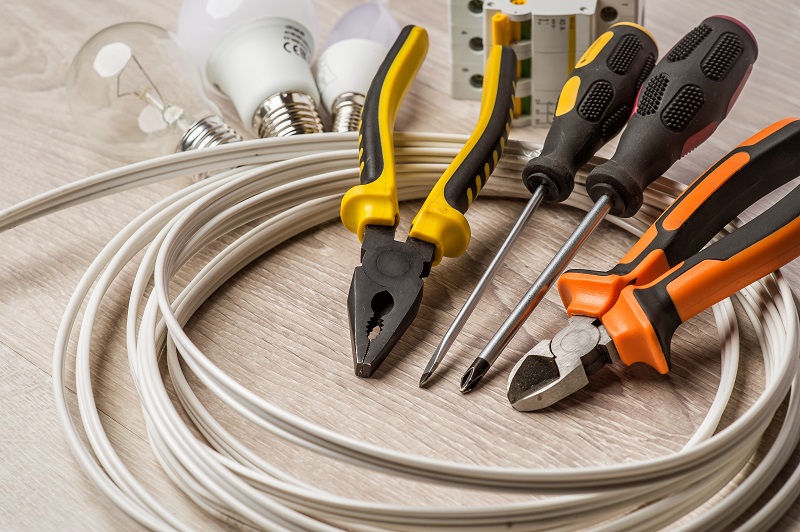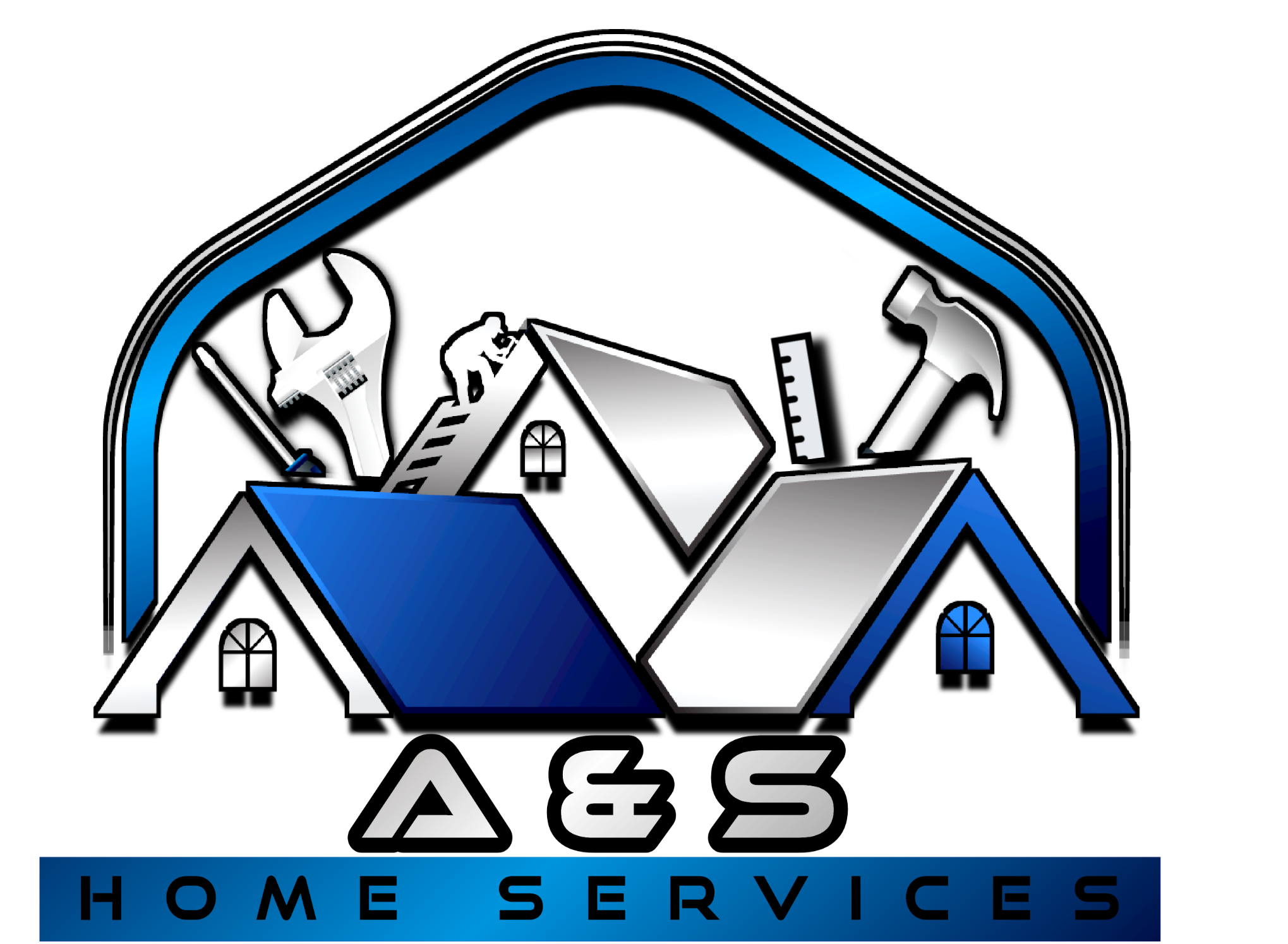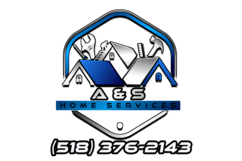Handyman Services in New York: Legal Electrical and Lighting Fixes (and When to Call an Electrician)

For first-time homeowners in Albany, NY, few topics feel as confusing as what counts as “minor electrical” versus “licensed electrical” work. You want simple fixes done quickly and affordably, but you also want to stay safe, follow New York regulations, and avoid any headaches when you sell or insure your home. This guide breaks down what a handyman can legally do with lighting and basic electrical tasks in New York, when you must bring in a licensed electrician, and how to plan your projects with confidence.
If you’re looking for a trusted, local team to help with minor tasks and to coordinate licensed trades when needed, A&S Home Services serves Albany homeowners with a safety-first approach, clear communication, and careful attention to code. Let’s explore where a handyman’s skill set shines—and where licensed help is the only safe choice.
The legal limits: what a handyman can and can’t do in New York
New York enforces the National Electrical Code (NEC) statewide, and many cities, including Albany, add local licensing and permitting rules. Here’s the bottom line for homeowners:
- Any work that installs, alters, or extends permanent electrical wiring or equipment typically requires a licensed electrician and, in many cases, a permit.
- Work that is considered maintenance or cosmetic (no new wiring, no changes to the circuit, no new box locations, and no panel work) is often allowed for a handyman—but local rules may limit this further. Always verify with your city or town’s building department if you’re unsure.
In practical terms, that means a handyman can often help with simple, like-for-like fixture replacements and lighting maintenance. But anything that involves the service panel, adding outlets or circuits, running new cable through walls or ceilings, or relocating boxes must be handled by a licensed electrician.
Licensed electrical work: where the line is very clear
In Albany and across New York, the following almost always require a licensed electrician and may require permits or inspections:
- Installing new circuits, relocating circuits, or increasing circuit capacity
- Adding new receptacles or switches where none existed
- Any work inside the service panel (breakers, service upgrades, subpanels)
- Rewiring or running new cable through walls, ceilings, or attics
- Converting or extending aluminum-wired or knob-and-tube systems
- Installing hardwired smoke/CO detectors (new installation or circuit alteration)
- Exterior wiring, landscape lighting on new low-voltage systems, and pool/hot tub electrical
- Hardwired whole-home surge protection or EV charger circuits
These tasks are beyond the legal scope of a handyman in most New York municipalities because they involve permanent wiring and/or changes to the electrical system that can affect fire and shock safety.
Common lighting and electrical fixes a handyman can usually perform
While local rules vary, the following “minor” or maintenance-level tasks are commonly handled by a handyman without the need for a licensed electrician, provided no new wiring is added and the work is like-for-like on an existing junction box:
Lighting maintenance and replacements
- Replacing light bulbs and tubes (incandescent, CFL, fluorescent tubes, and screw-in LED upgrades)
- Swapping out lamp shades, globes, and diffusers
- Assembling and installing plug-in lamps or plug-in pendant kits (no hardwiring)
- Replacing a standard light fixture with a like-for-like fixture on the same junction box, without moving the box or adding wiring, where permitted locally
- Installing battery-powered or adhesive LED puck lights, closet lights, and motion lights
Basic device maintenance at existing boxes
- Replacing cracked or discolored cover plates for switches and outlets
- Tightening loose screws on cover plates or fixtures (power off first)
- Replacing a worn pull-chain mechanism on a fixture if the repair does not alter fixed wiring
- Replacing plug ends on portable cords or repairing portable lamp sockets using listed repair kits
Notes on caution: Even when a task looks simple, local rules may still require a licensed electrician for replacing hardwired devices like switches, dimmers, or receptacles—especially in multi-family dwellings or rentals. In Albany, always call your building department if you’re unsure. When in doubt, treat device replacement as licensed work unless the authority having jurisdiction confirms it’s considered maintenance in your case.
Safety and code considerations every Albany homeowner should know
Your goal is to save time and money without compromising safety or code compliance. Keep these considerations in mind when planning minor electrical or lighting work:
- Turn off power at the breaker and verify with a non-contact voltage tester before touching any wiring, fixture, or device.
- Use only UL-listed fixtures and parts; avoid mixing parts from different systems that aren’t designed to work together.
- Match fixture and dimmer ratings. For example, use an LED-compatible dimmer when you have LED bulbs. Overloading a dimmer or using an incompatible type can cause flicker and overheating.
- Respect the fixture and box weight ratings. Ceiling boxes that aren’t fan-rated must not support ceiling fans. If you suspect the box isn’t fan-rated or the fixture is heavy, it’s time for a licensed electrician.
- Grounding matters. If your home has a grounding conductor, fixtures and metal boxes must be properly grounded. If you discover ungrounded wiring, stop and call an electrician.
- GFCI and AFCI protection. Kitchens, bathrooms, garages, basements, laundry areas, and outdoor receptacles often require GFCI protection. Bedrooms and many general areas may require AFCI. Upgrading these protections or adding them at the panel is licensed work.
- Tamper-Resistant receptacles are standard in most areas for safety. If you have little ones at home, ask a licensed electrician to verify your devices meet current code.
- Box fill and conductor temperature ratings are code issues. If you see crowded or overheated boxes, brittle insulation, or mismatched wire sizes, stop and bring in an electrician.
- Old wiring types like knob-and-tube or aluminum require special handling and devices. Do not disturb them—call a licensed electrician.
Can a handyman replace a light fixture in Albany?
Often, yes—if the swap is like-for-like on an existing junction box and you’re not adding new wiring, moving the box, or modifying the circuit. Many Albany homeowners have a handyman replace dated or broken fixtures with modern, energy-efficient ones. But there are exceptions:
- If the fixture is heavier than the box is rated for
- If it’s a ceiling fan and the existing box isn’t fan-rated
- If there’s no ground, damaged conductors, or signs of heat damage
- If the box is loose, the mounting bracket is missing, or the wiring is aluminum/knob-and-tube
- If the replacement fixture requires a neutral where none exists (common with some smart fixtures and dimmers)
In those cases, you’ll want a licensed electrician to verify and upgrade the box, wiring, or circuit protection. A good handyman will spot red flags and advise you to pause work until the underlying safety issues are addressed.
Switches, dimmers, and outlets: proceed with caution
Replacing a switch, dimmer, or receptacle can appear simple, but it may cross into licensed territory in many New York municipalities. Consider the following:
- Like-for-like device swaps may be permitted as maintenance in some areas, but not all. Albany’s rules can be stricter in multi-family or rental properties.
- GFCI or AFCI changes or additions should be handled by a licensed electrician.
- Smart switches often require a neutral wire; older switch boxes may not have one. Adding a neutral is licensed work.
- Two-prong (ungrounded) outlets and bootleg grounds are safety hazards best left to an electrician to correct.
If your goal is a quick, safe upgrade and you’re not sure whether the device swap is considered maintenance, ask your local building department. When in doubt, bring in a licensed electrician.
When handyman services are the right choice for minor electrical work
Here are common scenarios where Albany homeowners can confidently use a handyman to save time and avoid the scheduling backlog that licensed electricians often face for small tasks:
- You’re replacing a simple ceiling or wall fixture on an existing box and the wiring is in good condition.
- You want help assembling and installing plug-in lighting or swapping out decorative fixtures in several rooms.
- You need bulbs, tubes, or LED retrofits replaced in hard-to-reach fixtures.
- You want battery-operated or adhesive under-cabinet LED lights installed without hardwiring.
- You need cosmetic cleanups: new cover plates, tightening loose fixtures, and tidying up cord management.
- You want a pre-walk before listing your home: a handyman can identify punch-list items and coordinate licensed trades for anything that goes beyond maintenance.
If your list starts to include new outlets, moving boxes, or any panel work, shift the plan to a licensed electrician. Many homeowners start with a handyman to handle what’s clearly maintenance, then loop in an electrician only where needed.
Safety-first workflow: how to stage small projects
For the most efficient, code-compliant outcome, approach your project in stages:
- Walk-through and prioritize. Identify all “minor” items and any red flags (warm outlets, frequent breaker trips, aluminum wiring, old ceiling boxes not rated for fans).
- Complete maintenance-level tasks first. Replace bulbs, swap light fixtures on good boxes, upgrade to energy-efficient LEDs, tidy up cover plates.
- Escalate when needed. If the handyman finds issues beyond maintenance, stop and bring in a licensed electrician.
- Document improvements. Keep receipts and notes about what was done and by whom—useful for future permits, insurance, or a home sale.
How using qualified help saves you money
In Albany, small jobs often struggle to get onto a busy electrician’s schedule quickly. A qualified handyman can tackle maintenance work promptly, so you’re not waiting weeks for a five-minute fix. Bundling minor tasks into one visit is an efficient way to reduce trips, minimize disruption, and cut labor costs. For broader savings strategies, check out how planned maintenance and seasonal punch lists can streamline your home care—a concept covered in detail in the blog on essential home repairs year-round, which also highlights where smart handyman services fit into your upkeep routine without overpaying.
Another way to save is by choosing the right pro for each job. Understanding the scope of a handyman’s role helps you avoid calling a licensed electrician for purely cosmetic or maintenance items. If you’re new to homeownership, this overview of what’s included in professional handyman services can help you plan a realistic budget and timeline for improvements.
DIY, Handyman, or Electrician? A quick decision checklist
Use this checklist to decide whether to DIY, hire a handyman, or call a licensed electrician.
Usually DIY-friendly
- Changing light bulbs or tubes; swapping screw-in LED lamps
- Replacing decorative globes or shades
- Installing battery-powered stick-on lights in closets or cabinets
- Replacing cover plates on switches and receptacles
- Assembling plug-in lamps or plug-in string lights
Good fit for a handyman
- Replacing a light fixture like-for-like on an existing junction box, with intact wiring
- Installing plug-in lighting kits and cord management for a cleaner look
- Tightening fixtures, securing decorative hardware, replacing pull chains (non-wiring repairs)
- Replacing portable lamp sockets or cord ends using listed repair kits
- Installing battery-powered doorbells or replacing a doorbell button on an existing low-voltage system without altering wiring
- Small punch-list lighting tasks across multiple rooms (bulbs, globes, fixture swaps)
Licensed electrician required
- Adding new outlets, switches, or relocating existing ones
- Running new cable through walls, ceilings, or outdoors
- Working inside the service panel; adding or replacing breakers
- Installing ceiling fans where the box isn’t fan-rated or where the box needs reinforcement
- Upgrading to GFCI/AFCI protection or correcting ungrounded circuits
- Replacing hardwired smoke/CO detectors or interconnecting alarms
- Addressing aluminum branch-circuit wiring or knob-and-tube
- Hardwired landscape lighting, pool/spa electrical, EV charger circuits, or whole-home surge protection
Warning signs that mean “call an electrician”
Stop and call a licensed electrician immediately if you notice any of the following:
- Frequent breaker trips or fuses blowing, or lights dimming when appliances start
- Warm or hot outlets/switches, buzzing, sizzling, or burning smells
- Scorch marks on cover plates or fixtures, or brittle/damaged wire insulation
- Two-prong outlets with no ground, or obvious bootleg grounds (dangerous and non-compliant)
- Aluminum branch wiring, cloth-insulated wiring, or visible knob-and-tube
- Rust or corrosion in the panel, double-tapped breakers, or loose service conductors
- Water intrusion around boxes or fixtures, especially in bathrooms or exterior walls
These symptoms indicate system-level issues that require a licensed electrician’s diagnostic and repair expertise.
Long-term safety and efficiency: small changes that add up
Even minor lighting upgrades can improve safety, reduce energy use, and enhance comfort:
- LED upgrades: Replace high-wattage bulbs with ENERGY STAR LED equivalents to cut heat and energy costs.
- Right-size your dimmers: Use LED-rated dimmers for best performance and fewer flicker issues.
- Occupancy sensors and timers: Battery-powered or plug-in versions are easy to install and boost convenience and security.
- Night lighting: Plug-in night lights or battery-powered pathway lights improve safety on stairs and halls.
- Surge protection for electronics: While whole-home protection requires an electrician, quality point-of-use surge strips are an easy safety win.
As you chip away at small fixes, keep a running list of larger electrical goals (kitchen upgrades, bathroom ventilation, dedicated appliance circuits, exterior lighting, or EV charging). A thoughtful sequence—handyman maintenance first, electrician upgrades next—helps you budget and schedule effectively.
Frequently asked questions for Albany homeowners
Do I need a permit to replace a light fixture?
For a simple, like-for-like fixture replacement on an existing junction box, permits are typically not required. However, if you’re adding a new fixture location, moving the box, or running wiring, you’ll need a licensed electrician and potentially a permit.
Can a handyman replace a dimmer or switch?
It depends on local rules. Some municipalities consider like-for-like device swaps maintenance; others require a licensed electrician for any work on fixed wiring. When in doubt, treat device replacement as licensed work or confirm with Albany’s building department before proceeding.
What about swapping outlets for safer ones?
Upgrading to GFCI, AFCI, or tamper-resistant outlets typically involves code considerations best handled by a licensed electrician. If you discover ungrounded circuits, stop and call a pro.
Can a handyman install a ceiling fan?
A handyman can assemble the fan, but the electrical and mounting requirements are strict: you must have a fan-rated box properly secured to framing. If the box is not fan-rated or the wiring needs modification, you’ll need a licensed electrician.
Is low-voltage work always okay for a handyman?
Not always. New low-voltage systems (like landscape lighting) still require proper transformers, listings, and sometimes a licensed installer. Replacing a doorbell button or battery in a chime is usually fine, but adding new runs or power supplies crosses into licensed work.
Project planning tips for first-time homeowners
- Bundle work by room or system. Have a handyman handle all the maintenance-level lighting items in one visit.
- Photograph every junction box before and after a fixture swap. Documentation helps if you later sell or renovate.
- Label breakers accurately. It saves time and improves safety for everyone who works on your home.
- Keep spare bulbs, screws, and cover plates in a small home kit for quick wins.
- Schedule licensed work during off-peak seasons if possible. You may get faster lead times and better rates.
Albany-specific considerations
Albany’s housing stock includes historic homes with older wiring types and shallow boxes. That means even routine fixture swaps can reveal surprises. Expect your handyman to flag issues and stop if something doesn’t look right. When they do, take it as a sign that a licensed electrician should evaluate before proceeding. A safety-first pause is always cheaper than a rushed mistake.
Conclusion: Make smart, safe choices and get minor fixes done right
In New York, there’s a clear line between maintenance-level lighting tasks and licensed electrical work. Use a handyman for cosmetic swaps, basic fixture replacements on existing boxes, and lighting maintenance. Bring in a licensed electrician for anything that alters permanent wiring, touches the panel, or raises safety questions.
Ready to tackle a punch list or plan a phased approach to lighting upgrades? Partner with a team that respects both safety and your schedule. For friendly, local help that can handle minor maintenance and coordinate licensed trades when needed, contact A&S Home Services today. With the right pros, your home stays safe, efficient, and on budget—one well-planned project at a time.

